Heads up – Massive Sports Tech Holiday Deals List is Live!!! The Garmin Fenix 8 is $250 off (even the Fenix 8 Pro is $100 off!), the Apple Watch Ultra 3 is on sale, the Garmin inReach Mini 2 is $249, the GoPro Hero 13 Black, DJI NEO, and a ton of other brands/deals, including Wahoo, Oura, Whoop, Polar, Samsung, Google, and more than 100 sports tech deals here!
I’m DC RAINMAKER…

I swim, bike and run. Then, I come here and write about my adventures. It’s as simple as that. Most of the time. If you’re new around these parts, here’s the long version of my story.

You'll support the site, and get ad-free DCR! Plus, you'll be more awesome. Click above for all the details. Oh, and you can sign-up for the newsletter here!
Here’s how to save!
Wanna save some cash and support the site? These companies help support the site! With Backcountry.com or Competitive Cyclist with either the coupon code DCRAINMAKER for first time users saving 15% on applicable products.
You can also pick-up tons of gear at REI via these links, which is a long-time supporter as well:Alternatively, for everything else on the planet, simply buy your goods from Amazon via the link below and I get a tiny bit back as an Amazon Associate. No cost to you, easy as pie!
You can use the above link for any Amazon country and it (should) automatically redirect to your local Amazon site.
While I don't partner with many companies, there's a few that I love, and support the site. Full details!

Want to compare the features of each product, down to the nitty-gritty? No problem, the product comparison data is constantly updated with new products and new features added to old products!

Wanna create comparison chart graphs just like I do for GPS, heart rate, power meters and more? No problem, here's the platform I use - you can too!

Think my written reviews are deep? You should check out my videos. I take things to a whole new level of interactive depth!

Smart Trainers Buyers Guide: Looking at a smart trainer this winter? I cover all the units to buy (and avoid) for indoor training. The good, the bad, and the ugly.
-
Check out my weekly podcast - with DesFit, which is packed with both gadget and non-gadget goodness!

Get all your awesome DC Rainmaker gear here!
FAQ’s
I have built an extensive list of my most frequently asked questions. Below are the most popular.
- Do you have a privacy policy posted?
- Why haven’t you yet released a review for XYZ product you mentioned months ago?
- Will you test our product before release?
- Are you willing to review or test beta products?
- Which trainer should I buy?
- Which GPS watch should I buy?
- I’m headed to Paris – what do you recommend for training or sightseeing?
- I’m headed to Washington DC – what do you recommend for training?
- I’m from out of the country and will be visiting the US, what’s the best triathlon shop in city XYZ?
- What kind of camera do you use?
-
5 Easy Steps To The Site
In Depth Product Reviews
You probably stumbled upon here looking for a review of a sports gadget. If you’re trying to decide which unit to buy – check out my in-depth reviews section. Some reviews are over 60 pages long when printed out, with hundreds of photos! I aim to leave no stone unturned.
Read My Sports Gadget Recommendations.
Here’s my most recent GPS watch guide here, and cycling GPS computers here. Plus there are smart trainers here, all in these guides cover almost every category of sports gadgets out there. Looking for the equipment I use day-to-day? I also just put together my complete ‘Gear I Use’ equipment list, from swim to bike to run and everything in between (plus a few extra things). And to compliment that, here’s The Girl’s (my wife’s) list. Enjoy, and thanks for stopping by!
Have some fun in the travel section.
I travel a fair bit, both for work and for fun. Here’s a bunch of random trip reports and daily trip-logs that I’ve put together and posted. I’ve sorted it all by world geography, in an attempt to make it easy to figure out where I’ve been.
My Photography Gear: The Cameras/Drones/Action Cams I Use Daily
The most common question I receive outside of the “what’s the best GPS watch for me” variant, are photography-esq based. So in efforts to combat the amount of emails I need to sort through on a daily basis, I’ve complied this “My Photography Gear” post for your curious minds (including drones & action cams!)! It’s a nice break from the day-to-day sports-tech talk, and I hope you get something out of it!
The Swim/Bike/Run Gear I Use List
Many readers stumble into my website in search of information on the latest and greatest sports tech products. But at the end of the day, you might just be wondering “What does Ray use when not testing new products?”. So here is the most up to date list of products I like and fit the bill for me and my training needs best! DC Rainmaker 2024 swim, bike, run, and general gear list. But wait, are you a female and feel like these things might not apply to you? If that’s the case (but certainly not saying my choices aren’t good for women), and you just want to see a different gear junkies “picks”, check out The Girl’s Gear Guide too.

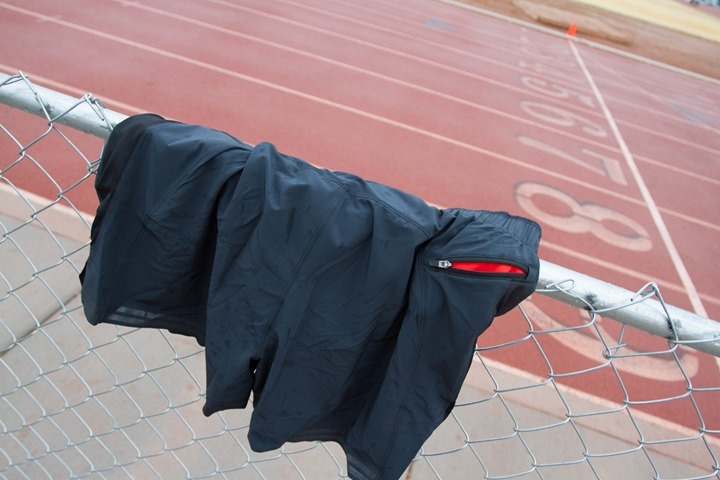
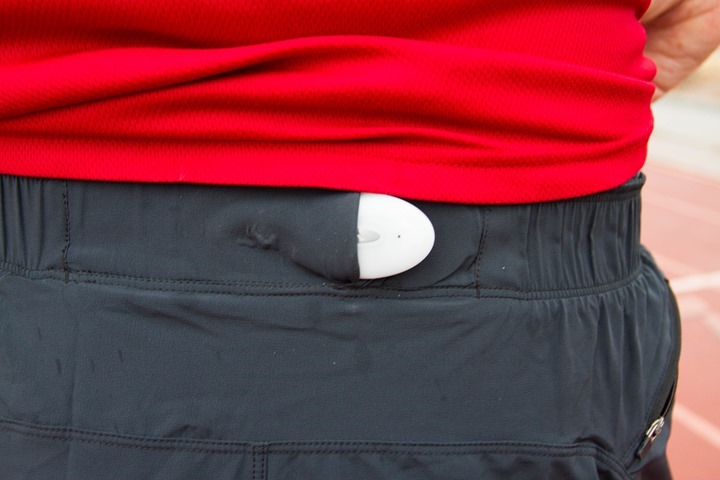

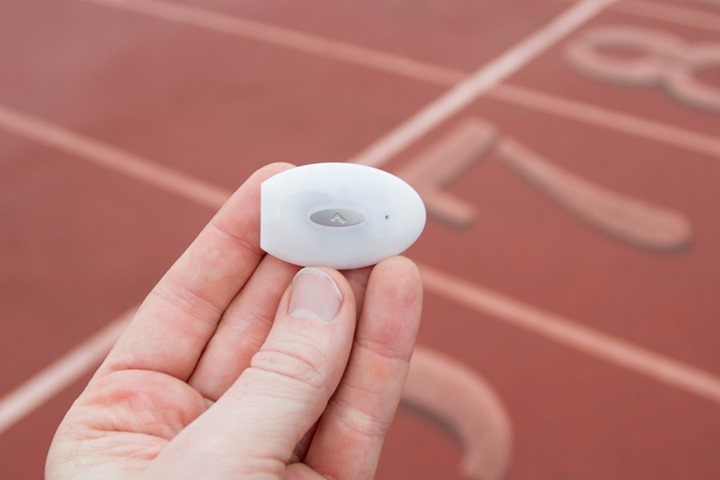
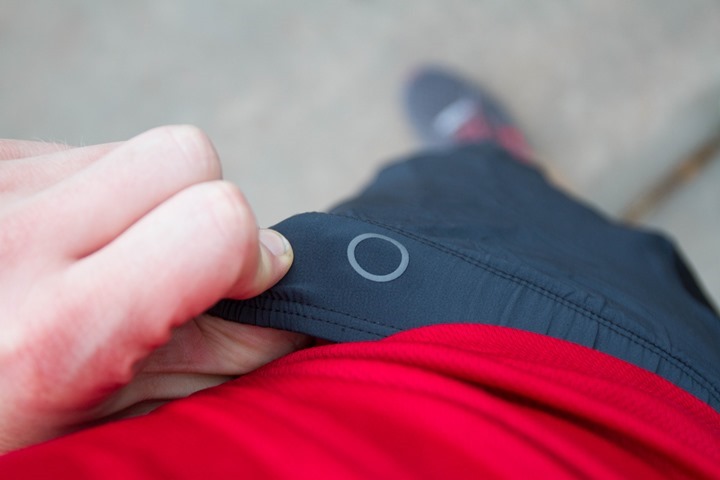
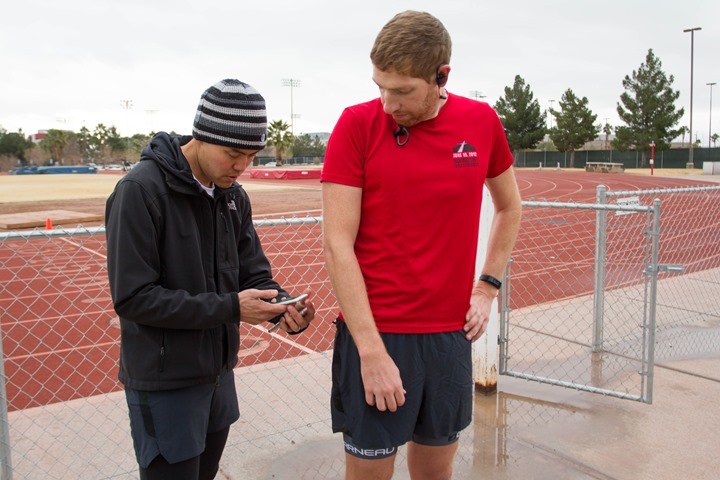
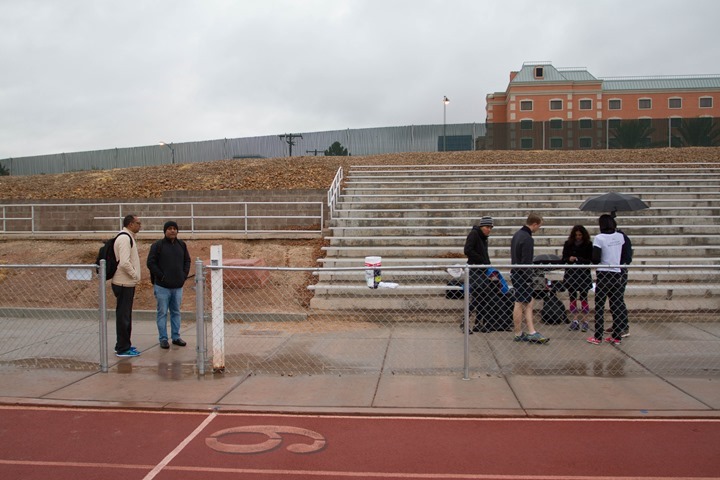
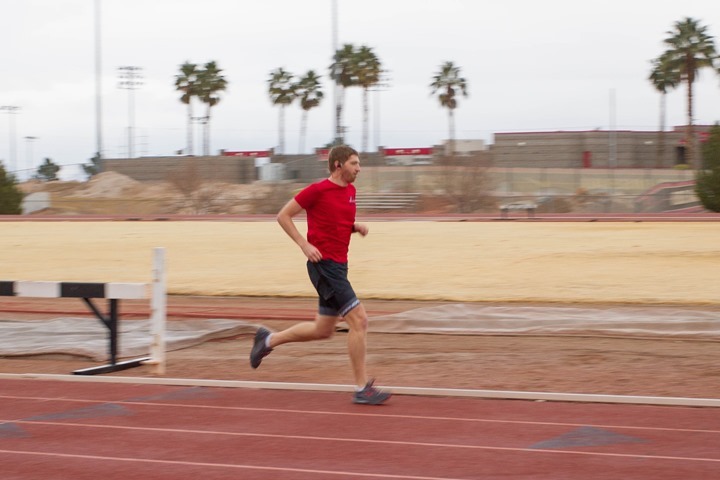

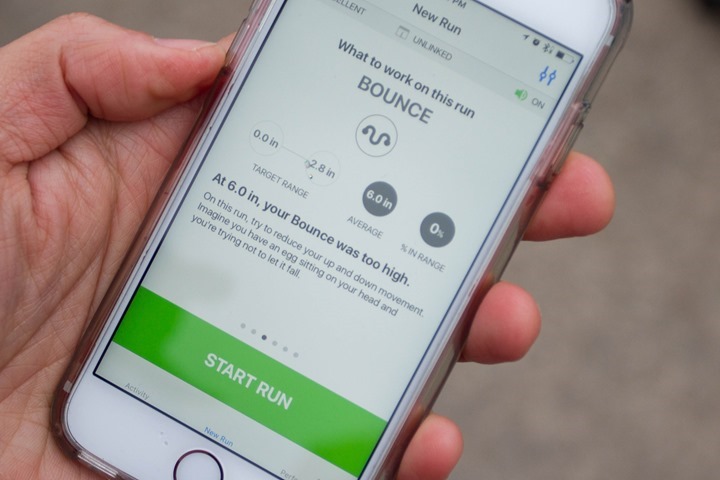

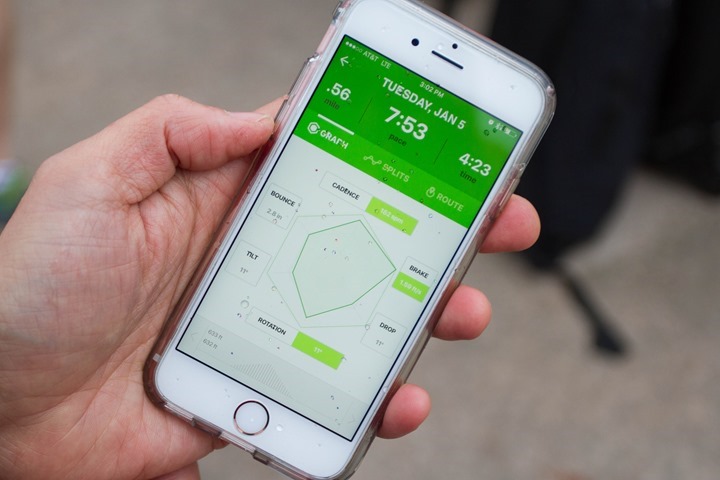
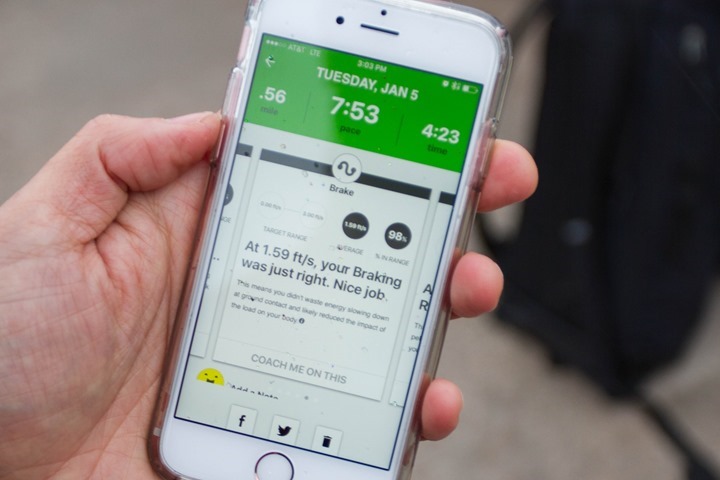
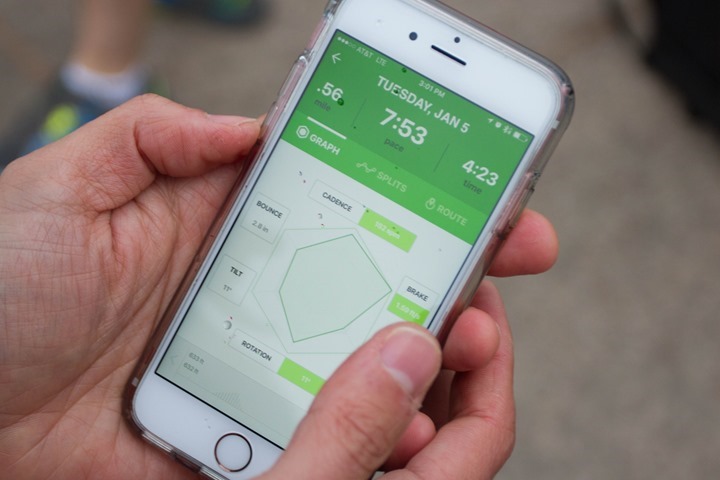
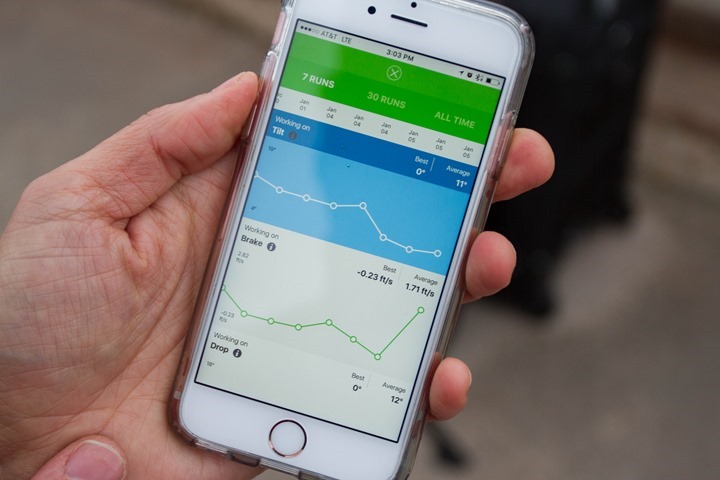






















Apparently I’m very comfortable with my body image.
And probably making others uncomfortable?
Great review. I’ve never considered to get any devices for my running (except HRM and GPS). What’s the competitors to look out for?
This device will more likely REDUCE your running efficiency than improve it.
The lack of biomechanical knowledge at these companies is larger than you would expect.
Fitting each individual to the average metrics found in studies usually hurts performance.
Hi Ze,
Rebecca from Lumo here. Thank your for taking the time to bring up such an important topic, and I am happy to address some of your concerns here.
Yes, when you initially change your biomechanics you are likely to reduce your running efficiency. However, as your body adjusts to the new technique you will again become efficient. The body is an amazing machine. Often it is worth the small step backwards for the big step forward if it means reducing your risk of injury and hoping to reach a new PR. If you are worried about this temporary setback, I suggest focusing on changing your biomechanics during the off-season if you are a seriously competitive athlete. This is how I approach gait retraining with runners in a clinical environment.
I am a PhD running biomechanist with 8 years of clinical experience in gait assessment and retaining, and am running our coach program for Lumo Run. To ensure our biomechanical knowledge is above par, we are also partnered with Loughborough University who is well known for the biomechanics research. We have an academic and coaching advisory panel made up of Bryan Heiderscheit, Jonathan Folland, Matt Dixon, Matt Fitzgerald and Hawi Keflezighi, as well as local run club coaches that spend their days in the trenches. Finally, we are excited to announce that Lindsey Scherf is joining our team. Lindsey is seed 10th for the upcoming trials, is a coach and has a Masters degree in Kinesiology.
Our primary goal for Lumo Run is to help move people out of bad form. You are absolutely correct that there is not a one size fits all for any of these metrics which is why our programs are based on zones, similar to heart rate zones. We do know that there is bad form and these are the things that coaches typically work on with their athletes.
If you have any additional questions, please let me know and I would be happy to elaborate more. Thank you.
That is a great response
@Ray – many thanks for highlighting this technology.
A couple of questions:
1) Could a ConnectIQ app be developed for this so that I could analyse the output in Garmin Connect/Strava?
2) Can I use the pod in another pair of shorts?
Thanks again.
Apparently I’m very comfortable with my body image. But can’t run for ****! So i’ll give it a go.Ordered
Shame it only works with the iphone. Would’ve given it a try otherwise.
Very interesting Ray. It sounds similar to the MOOV but if I understand correctly, this device works on specific things per run (modules). The MOOV appears to evaluate multiple items and gives you coaching advice while you run.
This device seems to be more practical and based on cited research as you noted.
Could you use it on a normal run and have it evaluate everything in real-time or do you need to work on a specific module at a time?
Hey Mike, Lumo here. Thanks for the great question! You are correct in terms of the in-run audio cues — the Lumo Run only provides audio cues on one selected metric (cadence, bounce, etc). We found that having audio available for all is a bit of sensor overload for the runner while you’re out for your run :) However, you will get a detailed post-run summary via the app that will show you exactly how you did against all of the different metrics, as well as provide tips for improvement for your next run.
Hope this helps! Let us know if you have any other questions.
Looks like the MOOV is on your wrist so there isn’t any ability to measure things like pelvis tilt and rotation
Lumo, how do you define improvement? What validation have you done that getting people to move to match your metrics actually improves efficiency?
Thanks very much! I will definitely be following this technology with interest.
Hey Ze,
We realize that improvement can mean different things for every runner. For some, it may be to run faster, or farther, or perhaps it’s to meet a certain goal like decreasing your ground contact time. What we’ve found through partnering with Loughborough University and working with our advisory biomechanics and coaching panel is that the metrics that we’ve identified (cadence, bounce, braking, pelvic rotation, etc) all contribute to helping runners move away from poor running form that can increase your risk of injury and ultimately hurting performance.
For example, for cadence, we know through Dr. Bryan Heiderscheit’s work that increasing your cadence can greatly reduce your ground contact time (up to 14% reduced with just an increase of 10 extra steps per minute), a metric that we know helps improve speed and pace.
So I’ve done a bit more literature review on both cadence and vertical bounce retraining. Please note that I have a PhD in biomechanics, with both significant experimental and dynamic modeling experience. I note this because researchers who only do experimental work make conclusions that ignore really confound correlation with causality.
In a few experiments that try to modify cadence, they find increasing cadence leads to no improvement, OR a reduction in running economy. In work on retraining to reduce vertical bounce, runny economy suffers.
I could go into more detail, but I think that is sufficient for now. Suffice to say the research on showing effects of retraining these running parameters on economy is scant, and is generally negative. I haven’t even gone in to the claims of reducing injury.
Lumo better be careful, such claims might lead to someone slapping a big lawsuit on them.
I’m curious Ze – what’s your take in this.
When I look back at your past posts, all of them are slanted heavily against these sorts of devices (be it Stryd or Lumo), kinda throwing out what’s known as FUD (Fear, Uncertainty, Doubt), but not actually presenting any real evidence. No links to the studies you noted, etc…
Just wondering…
Ray,
You are astute. I do think of myself as an expert in the field (biomechanics / algorithm development), I’m passionate about it, and I have thought deeply about these topics that these companies happen to be addressing.
How do I make a power meter for running?
How do I assess and improve running efficiency?
My internal answers to these questions are much more complex than these companies claim. Their simplifications may be “good enough”, but I’m going to critique with logical arguments until proven so. Frankly, I feel it is the responsibility of the company to prove their claims correct and not outsiders prove they are incorrect.
But I’ll give you a taste – here is an article I read that has been cited as positive proof:
link to ncbi.nlm.nih.gov
If you have access and read the actual article, it is very clear that the modification of reducing vertical displacement (i.e. bounce) worsens running economy. Oh btw, the subjects also increased their cadence. The authors then attempt to statistically separate different biomechanical factors and their contribution to the change in running economy, and isolate the vertical center of mass as the factor “ruining” everything.
In other words, they didn’t get the result they wanted, but its because people were running more crouched. If the runners stayed upright and reduced vertical displacement, it would work!
But that’s not how it works, all these factors interact. If you do biomechanical modeling, you would know that you simply can’t prevent crouching and assume other mechanics will stay the same (in fact they can’t). Crouching is inherently the way that most people can biomechanically “reorganize” to generate the ground reaction forces in the right direction to reduce “bounce”.
So there is no way to conclude from this study that economy can be improved so long as X and Y happen. It was shown directly, just hypothesized.
I am not saying people’s running economies can’t be improved, but it is largely very subject specific and requires a good amount of information / feedback to build the right individual model to make those changes. And so far we haven’t seen that proven in research.
To suggest that a commercial company happens to have the answer and we should just “trust them”, well, consider me skeptical.
so you “bounce too much” is there any actionable insight to rectify it? (drills)
eg running faster will probably make you bounce less (not especially helpful advice)
images show your braking increasing at the end (presumably as you slow down). Do their trends exclude outliers such as this and/or what exactly do they decide to use as a marker of performance?
Your point on caching noted. It would have to cache to be useful in the longer term, IMO
if a cynic were to say “it looks like a slightly improved hrm-run’ how would you respond?
I think there a few similar products approaching the market in 2016 (as you probably know!)
Hey there, Lumo here. Thanks for the great questions — We’re happy to address them.
At the beginning and end of each run, Lumo Run will always provide a tip to stay in the target band of the metric you are being coached on. A good example for reducing bounce is to picture trying to scrape gum off of the back of your shoe on each step to smooth out your vertical movement. In addition to these tips, you’ll be able to find additional resources on our website for drills and exercises for improvement.
We currently don’t exclude outliers, so if you slow down considerably during your run, this will be counted as part of your metrics. Each metric has a target band of what is considered a biomechanically healthy range based on research as Ray mentioned in his post. These are the primary markers of performance, and you’ll see a summary of this in the spider chart in your post-run summary that visually represents how you did against all metrics.
Hope this helps! Let us know if you have any other questions we can help with.
5k runner:
Lumo’s device will likely REDUCE your efficiency that improve it. There is a lack of biomechanical knowledge here, they are properly sensing your movements but attempt to move your to some group average, which does not take into account your individual biomechanics. Braking forces and bounciness and cadence are all biomechanically linked to your specific anatomy.
I would hold off until they provide in a large study that people who use this device and make the suggested changes in running mechanics actually improve a quantified measure of efficiency.
Ze-
Given that plenty of studies talk to cadence and the importance thereof. And given that you seem to think you know more than these studies (and left three comments about it), I’m going to turn it around.
Please show me a study that says we should decrease cadence?
Cheers.
Lumo, thank your for your detailed reply.
Ray – metabolic demands of human movement is dependent on muscle activation to produce both external and internal work. The energy required to swing your legs back and forth is nonlinearly related to cadence and mass / moments of inertia of your legs. This will increase as your cadence increases.
Higher cadences are better for reducing energy needed by getting your body segments in positions during braking / propulsion that are more efficient. Thus there is a tradeoff and optimal cadence for each person.
That value depends on various things, one biggie is leg mass (and distribution). Someone with heavier legs (especially more muscle distally such as the soleus) will pay dearly for higher cadences, and their optimal value will be lower. This is one such difference in East African vs Caucasian runner biomechanics. (The great book “The Sports Gene” touches on this anatomical difference)
As an extreme example, go put 10 lb ankle weights on and see which direction your cadence naturally goes.
Bounciness is another example – some people think low bounciness is better but that isn’t true, and is dependent on your biomechanics. For instance, if you don’t have great ankle dorsiflexion, trying to reduce bounciness can hurt efficiency.
All these things can be accounted for in a product, but I’d be hesitant that Lumo has that depth yet, and certainly not until they publish results validating this.
These give new meaning to the term, “Mr. Smart Pants”.
It’s a good price for women’s capris and I was ready to pull the trigger until I got the bottom of the FAQ where it says it only runs on iphone. Sad. :(
I was all set to pre-order until I read that it only works with an iPhone.
Thanks for pointing this out!
Ray,
If you could include a line about this in future reviews for other products it would be helpful, because until they add Android this is just a really expensive pair of running shorts since I’m paying for features that aren’t available to me.
Yup. I was definitely pretty surprised to hear there wasn’t going to be Android support (since for the most part, we’re beyond that). Usually you might see a few week (or month or so at most) gap between the two.
Hey guys!
Thanks for your interest in Lumo Run. To echo what Ray has already posted in comments below, we’re hoping to follow up with the Android app shortly after launch.
In the meantime, it would be tremendously helpful if you could email support@lumobodytech.com to let us know what Android device you are using so that we can prioritize the development for specific devices and speed up the process. Thanks!
Also pretty comfortable with my body image here ;)
I have done video analysis in a very casual sort of way but this looks like a really good way to analyse things. The braking metric in particular would be useful (you can already get bounce and so on from most newer Garmins)
Oh, and yeah: Android app pretty please
With Android’s BLE implementation being so varied (read: broken), you might be waiting for a while… It’s not surprising Lumo have released with iOS only.
So, I have to wear their clothes to use their device? And somebody put investment capital (quite) at risk thinking that’s a good idea?
I hate to pile on. Its 2016. Android is over 50 % market share in every major market, and 2/3 in the US. ios should be the follow on market, not android. I would have purchased this.
Market share in one thing but if 95% of the android users aren’t a viable market it’s a waste
Given almost every other device is designed to work with Android, I’m guessing the Android market is quite viable.
For mature products yes but for a lot of new products that’s just not the case.
New products tend to go iOS first – it’s a much smaller number device/OS combinations which makes getting a release right much easier. Add in Android’s fragmented and broken BLE implementation and it’s no surprise they’ve gone iOS only at release. Go look at how much fun Suunto are having getting the Movescount App to reliably talk BLE in Android. Even Garmin Connect (~12 months ahead of Suunto) took a while to get it relatively reliable.
(and before you suggest otherwise, no, I’m an Android user too)
So I circled back with Lumo on this, and they pretty much echo Paul’s comments (which, btw, exactly echo what I hear from everyone else in the industry). Here’s their thoughts:
“Regarding Android, we will be launching on iOS to start because the Bluetooth stack is standardized so it’s much more straightforward to provide the best user experience-particularly because of the real time component. Since there is so much variation on Android devices, we have to add them as we go along. We followed the same process for our Lumo Lift posture coach.
But, if people have a particular android device that they want to use we really encourage them to get in touch with our support department support@lumobodytech.com because we’re trying to prioritize which models to add, in what order.”
I use Android but I preordered on anyways. Just going to pick up a used 4s only to use this. If I were Lumo as far as developing for android I would start with the Nexus devices then move on from there. Nexus runs the the stock version of Android and it seems like the most logical place to start to me.
I actually bought their previous product the Lumo Lift last year after Reading about it in Running Fitness (UK magazine). I have such bad posture when working so I got a bit disheartened and never got around to using it that much. The product (hardware and app) is quite polished though so I think they will deliver with their shorts/capris.
I hope they launch the sensor-only product soon. I’d freeze wearing capris right now…and swelter in the DC heat come June.
We truly are living in the future…
So far, this is the most interesting thing I have seen Ray report on from CES. I’m very data driven, so this is right up my alley. And I know my running form sucks :)
Off to order.
By chance have you been able to take a look at what New Balance is doing with shoe’s heard they’re a small part of intels keynote?
Please tell me they are going to sell the pod separately. Because using their clothes is a non-starter if you want metrics on every run. Also, it needs to broadcast ANT+ to a watch. Forced tethering to their phone app is also a deal breaker.
Otherwise, I can picture a future with one of these capturing all metrics, including power, saving data to a watch or eyewear mounted HUD.
The shorts have conductive sensors in the waist band.
I’m sure they’ll either up their product line, or license to a more popular clothes company if it takes off.
You’d need write more ANT+ profiles and then build an ANT+ watch that supports it first… Of all the metrics presented by the device the only one currently supported by ANT+ (and therefore ANT+ watches) is cadence.
(Garmin’s additional metrics from the HRM Run pods are private ANT profiles)
What kind of headphones do you use? I’m trying to find a good pair for my runs. Thanks!
It’s hard to believe that any startup (particularly a data geek one) would launch with only iOS support.
Why alienate 80% of your market?
Not much more than Garmin Advanced Running Metrics and another device to worry about with it’s own App, etc. They are providing better analysis with correctional suggestions I guess, but Bounce – Your bounce is too high, try to bounce less… Not exactly insightful. Braking is the one metric I can see as pretty useful and not including in Garmin metrics yet.
Think these guys are in trouble.
Not quite the same actually. Cadence is same of course, as is bounce (Garmin says Vertical Oscillation). But others are actually a fair bit different.
I do think the correctional pieces is a big deal though – because it’s not something Garmin is doing (despite me point it out numerous times). Lumo is also doing more pattern analysis of your trends, vs Garmin with a single workout approach and just a graph of dots.
Great review! I’ve had a Lumo Lift (posture monitor) for over a year now, have been extremely happy with both product and support. Your review of their new running capris was enough to get me to push the button. Looking forward to a new toy in the spring!
Breaking news! I may be wrong, but it looks like Beats PowerBeats2 wireless are the official wireless headphone of DC Rainmaker? Care to comment, Ray? :)
They just handed me their pair to wear (didn’t have any on me). I’ve got 2-3 different headphones, including those however. But honestly I don’t tend to wear headphones too much while running. Just not my thing.
You prefer to be able to hear the car that’s about to kill you, eh? :)
I hope the thing works better than their posture device. Honestly, it was worse than a POS. The Hunchback of Notre Dame wouldn’t be able to get it to buzz.
Ray, appreciate all the CES info.
So for not too much more $$ than a plain old Polar footpod, you get much more analysis. Any competing products on the horizon Ray?
Looks interesting, but my concern would be that as the rep himself points out in your video, everyone runs differently (even two high-end athletes), presumably especially so if they are in different running fields (ultra, sprinter, mid distance track, fell, cross country, road marathon etc etc). How then can canned ‘coaching’ be sure to improve your style of running relative to both your individual aims and your individual body shape, flexibility, fitness level and so on? Does the (admittedly fairly spurious) Fitbit class action not worry these guys quite a lot, especially as fiddling with running form is feasibly much more likely to result in injury than an inaccurate HRM? There is still plenty of debate to be had even on cadence, which has been studied by far the longest of all of these metrics, so how good is the science they are basing their advice on?
I probably come across more negative than I mean to, but I’d be interested to read their papers long before making a purchase decision – do they intend to freely publish links to them somewhere? Sorry for the barrage of questions!
My guess is this would only be useful to those who aren’t already highly coached which is the majority of people. As I’m sure an ideal 5k form may be different then an ideal marathon form but most people are so far from ideal that they just need to make general form improvements
I wonder if the app could be told what type of runner you are (distance and surface type) and use big data to better look at runs.
Hey Matt & Eli,
Thanks for bringing up some great points.
Our primary goal for Lumo Run is to help move people out of bad form. You are absolutely correct that there is not a one size fits all for any of these metrics which is why our programs are based on zones, similar to heart rate zones. We do know that there is bad form and these are the things that coaches typically work on with their athletes.
To develop these target bands and programs, we are work with many experts, including an in-house PhD running biomechanist with 8 years of clinical experience in gait assessment and retraining, as well as partnering with Loughborough University who is well known for the biomechanics research. We’ve built out an academic and coaching advisory panel with specialists in biomechanics, coaching and athletes including Bryan Heiderscheit, Matt Dixon, Matt Fitzgerald, and most recently, Lindsey Scherf (seed 10th for the upcoming trials & coach).
Eli, specific to your comment, we firmly believe that the Lumo Run will be beneficial for all runners, regardless of whether they have or are training with a coach. The Lumo Run technology allows for runners to get insight into their form which otherwise could not have been analyzed to this detail without visiting a gait lab or running clinic (which can be costly and not available for everyone). The coaches that we work with are excited about Lumo Run because this gives them a training tool that provides a way to measure improvement as well as very slight changes in form that is hard to detect to the naked eye.
Cheers!
Sorry, I guess I worded that poorly. I just meant those who don’t have someone working on their gait vs those who have already done successful gait work.
I’m with Ze and am skeptical about these things. Let’s look at Lumo’s claims.
“LUMO RUN COACHES YOU TO RUN MORE EFFICIENTLY, IMPROVE YOUR PERFORMANCE AND REDUCE THE RISK OF INJURY.”
How can you prove that my injury risk will be lessened by using this thing? If I wear it and never get an injury, you can’t prove that Lumo was the reason. If I get three injuries, you can’t prove I would have had four without it. No matter what hurts, you can always say I didn’t warm up enough or pushed too hard in that workout.
If my race times aren’t better, you can claim that they would have been, and should have been, if only I had trained more often or using a better training program. I ran worse despite the Lumo advantage.
And if my friend the 800 meter runner and I both use a Lumo, can it give him clues to improve the “correct biomechanical running form” for a sprinter and me, the “correct biomechanical running form” cues for an ultra runner? How would it know?
I don’t see how Lumo can PROVE any of this, which makes me skeptical of the whole thing. If it said it could tell me how my hips move or how many steps per minute I take on flats vs uphills vs downhills vs trails vs sand vs treadmill vs track, I would accept those claims and might be interested. Since it’s telling me it can guarantee all this other stuff, I’m not interested.
Metrics that are actually backed up by science sounds awesome.
I’ve had a look on the website though & couldn’t find the references.
I did find this though:
“LUMO RUN COACHES YOU TO RUN MORE EFFICIENTLY, IMPROVE YOUR PERFORMANCE AND REDUCE THE RISK OF INJURY.”
Those are pretty big claims. If it was backed up by science I would buy one.
1) more efficient
2) improved ‘performance’
3) reduced injury risk
If they come back to this thread please can they link to the original research that justifies each of these claims, so that we can all see it for our selves. Thanks
The links to the studies are from within the app for each module. I’ll see if I can get them to post a few as examples.
That said, proving the statements you quoted are actually super-easy, since those are all well identified studies cited numerous times (i.e. cadence).
I’m more concerned with something like changing ‘drop’ and having that be proven. So the newer stuff is the pieces I’m interested in.
Some examples would excellent.
Ate there any studies that have particularly impressed you as regards those simple bits? The ones I’ve seen have been badly designed and over-interpreted, but maybe I have been finding the wrong ones.
Although, of course their specific claim is that Lumo Run Coaching improves those things… But I’d be like to read any good papers you’d recommend as regards cadence etc.
In particular I’m interested in where their website says that hip rotation (not tilt or drop) is bad. I’ve just checked on YouTube and I definitely get the Impression Olympians rotate their hips.
Maybe, I am wrong though and it is a visual illusion.
Wow, “super-easy” to provide that retraining to higher cadence / changing bounce improves efficiency? That’s funny, because I did a quick literature review and found scant evidence for it. (And some that showed it worsened). Now I need to read the entire article first, but this smells like the barefoot running sensationalism that also lacked biomechanical logic and empirical proof.
Typical in many fields, but the concept that correlation does not necessarily mean causation applies here. Trust the experts to read the studies (that aren’t biased). I’ll take a look at the articles when given and give an unbiased assessment.
Regards, a phd in biomechanics.
That’s an interesting one. I’m thinking about the lawsuit against Vibram Five Fingers. Arguably, they help reduce injury BUT, if you don’t transition properly into them (like I didn’t, the first time around, leading to a stress fracture) they can have quite the opposite effect.
I’d say something similar can happen with being encouraged to increase your cadence. I fully believe that a running cadence of at least 170 spm is a requisite of good running form; the converse, however, is not true. More importantly, when you change your cadence artificially , you change your running form (doh!) and therefore the muscles you use while you run. Ask my wife: she is complaining about her calf muscles hurting now that she is running to my 175 bpm drum n bass mixes! It’s easy to say but I think that a higher cadence should be a result of better running form, not the other way round.
The point is, if you carry on with your usual milleage changing only your cadence, I would expect to see people tearing Achilles tendons and the like. As with everything, “poco a poquito” (little by little or step by step). I just hope that Lumo’s lawyers have studied the Vibram case…
Hi Rob, these are excellent points you bring up, especially around cadence. We fully realize that changing your cadence, for example, from 150 spm to 180 spm, suddenly is not recommended for any runner as it exposes you to risk of injury. Like you said, gradual change is the best way to alter running form. To incorporate this, the Lumo Run takes a 10% cadence coaching model where it will only coach you to improve your cadence by 10% at a time (a value taken from a study done by Cavanagh and Williams) .
We’ll also have additional resources with exercises, stretches and training programs on our website to help these gradual changes to make improvements in form. We’re continuously working on providing more content, but here is an example post on cadence and stride length: link to lumobodytech.com
Anecdotally, I’ve personally increased my cadence from 165spm to 185 over the course of 2 months using Lumo Run and noticed some initial tightness of the calves too. I worked through it gradually through incorporating stretches and additional exercises and as a result, my overall form has improved and my pace has improved significantly too.
I’m not sure slapping a slab of glass into one side of my shorts is a terribly great way to improve my running form. I’ve got enough left/right imbalance without having something slap one leg.
Agree, could not run with a phone in a pocket, maybe a water bottle holder type thing or backpack for water etc
Hey guys, thanks for the feedback.
Though the phone and app is required to receive audio coaching, it is entirely possible to get all of the data and metrics from your runs without running with your phone.
The biomechanics data is captured all through the very small sensor embedded in the waistband in the shorts (see photos above in Ray’s post) and can be uploaded onto the Lumo Run app after your run once you return home. Since the phone is in charge of location data, you’ll unfortunately miss out on map routes, you’ll still be able to see how you did against all of the metrics through the post-run summary.
If you do choose to bring your phone with you, it does not have to go in the pocket and rather can be on an arm band or in your hand if you prefer.
Hope this helps!
I think this could be great, esp on long runs when form starts to falter as fatigue sets in, it won’t make you faster maybe, but might keep your mechanics together so you don’t hurt as badly, add HUD to this, not bad…
Ray (and Lumo too, for that matter). Thanks for this part of the review: “…the unit would audibly tell me what to focus on (as well as show me in the app and explain in text).” As a deaf person, the alternate to audio feedback adds a lot!
Glad I looked at the comments. I was about to buy it but I don’t have an iPhone. Glad y’all mentioned it. Kinda bummed. I was going to experiment with different types of shoes to see how different stacks affected my running dynamics. Oh well.
Any future chance of this device poring with a Bluetooth Smart GPS watch for live run feedback sans-smartphone, via the watch display? This would also allow route-tagging and map views (along with some other integrated data) post run. I suppose apps (connectIQ/movescount) could be developed to this end.
*pairing …autocorrect
So the shorts just provide a secure way of keeping the pod aligned with the hips and a button to press? The conductive material mentioned is just to connect the single button, not to attach to the skin like heart rate straps?
Where is the phone pocket? left/right side? center back (in my mind the best location)?
If the pod is where data is broadcast from and you use an arm mount for a phone how well does it work? Thinking if it BLE then it may have signal problems when line of sight between them is through the body.
Seems to indicate further up that is a thigh pocket which, as mentioned, is about the last place I would put anything more bulky than a key or credit card when I run. I mostly wear bike type shorts for running these days that have a phone pocket centre back (pretty much where this pod goes). Putting my phone there means just not jump about and the elastic nature of the shorts means they don’t fall down. It seems Ray was wearing some bike type shorts *Louis Garneau ?) under these ones. I wonder if you can attach the pod to our own shorts/tights somehow?
The pocket is on the right back-ish side. So perhaps only 3-6″ from the pod location.
It was surprising, as I was slightly worried about bounce (having tried carrying phones in pockets before). But the way it was designed was sorta like a phone case, which kept it snug in an envelope, so I’d totally forgot it was in there until they took it back out again.
Does that mean the pocket is designed for the “normal” sized iPhone 6/6S ?
Any new challengers to Athos, Mbody, etc. (EMG) wearables at CES this year? Apart from pelvic rotation, the Lumo pod doesn’t seem to offer much over Garmin’s HRM-Run data. For tri-specific training (esp. lower-body), an EMG garment with good software sounds like an appealing (yet pricey) option.
Seems like Lumo’s strong point is telling you what to do based on what its sensors pick up. Seems like everything else just records data to look at but no actionable feedback during the run. I’m still waiting on LEO (Another EMG device)
Looks a good product. I thought I couldn’t care less about analysing my running form in minute detail, but when I got a Fenix with running dynamics, I noticed my cadence was always in the red.
After doing lots of drills to increase my running cadence, which felt very unnatural at first, I’ve found fatigue and injuries have decreased, speed has gone up, and I’m enjoying running more.
I think if you’ve already got good running form the gains from these products will be marginal, but if you haven’t these can make a big difference.
Would a link to flipbelt.com (or something similarly snug) with the pod situated in the same position as the pocket on the shorts work?
People are going to try this out anyway since the reliance on a particular pair of shorts is a really unappealing feature so I’d really appreciate an official response here instead of having to wait for someone to try it out…
Would it be possible for Lumo to provide similar information/advice from the Garmin running dynamics information? I’m not really interested in buying another piece of hardware (especially tied to a specific pair of shorts and needing an iOS device) but if I’d happily pay for a service where I could upload a .FIT file after each run and get feedback/advice.
Hi Chris, thanks for your feedback. We currently don’t have plans to expand to a service like that where runners can upload external data from other trackers. At the moment, we are focused on improving running biomechanics, specifically through looking at metrics like cadence, bounce, braking and pelvic movement which can only be measured through our Lumo Run sensor. Thank you for the suggestion though, and I am happy to pass that feedback along to our team.
My n=1 response as a consumer is that this *could* be a great product for me and one I would pay for. I am coached remotely and often have “do some drills, focus on form” written in to run sessions. But I get no actual feedback on my form. So I can see myself using this product on those sessions.
*if* I can be convinced that making the form changes will eventually make me a faster, more durable runner.
My suggestion to the maker would be that attention be paid in the marketing process to educate consumers on why the measured metrics matter.
Hey Jimmy,
Thanks for your feedback. We agree that one of our biggest value propositions for Lumo Run is that this level of detailed analysis on your form was previously only available through gait labs and running clinics, but with the Lumo Run sensor and shorts, runners and coaches now have access to continuous insights into running form for actionable and measurable improvements.
Each of the metric pages you’ll find from our website link to lumobodytech.com (by clicking on the metric titles on the section with the spider chart) gives you more information on what those metrics are and why they are important, if you are curious to learn more. Thanks!
thx guys. the website was informative enough that i preordered. One other request though – The audio cues need to be able to interrupt my music then let it play again. Put another way, I run with wireless headphones and play music on my phone. For this product to be a regular part of my running I need to still be able to listen to music.
Other wise it will still get used for occasional sessions or maybe the first 20min or so of a run but then I will want my music back more than the audio cues.
Just a thought.
Looking forward to trying it out in the spring when you have it put together.
Thanks so much for the support, Jimmy! I also have some good news to share :) The Lumo Run audio coaching will interrupt music temporarily and automatically resume music playing on your iPhone as soon as it is done talking. The app will continue to run in the background so you’ll be able to move away from the Lumo Run app to control music apps or any other tracking app without interruption to your run.
Thanks!
Does the audio coach include metronome functionality when working on cadence?
I’m thinking the metronome would go at the rate you want your cadence to be and the pitch of the beat could be in indicator of how far off you are (lower pitch being slower then target and higher pitch being faster)
Hoping the target is not just some much faster goal but more intelligently controlled. So when not moving (like if you are stopped at a intersection) the metronome can shut off. When you start moving it doesn’t go on immediately but detects what your natural cadence so after a set time interval (10 seconds maybe) it could start up the metronome to match your current cadence and then slowly increase without being too much higher then your actual cadence. That way its more of a subliminal thing and doesn’t leave you feeling like you can’t jump from what you’re doing to that the metronome wants.
Maybe the vibrator unit could also be a metronome? But that might kill the battery too fast
Hey Eli,
We don’t have a metronome function for cadence in the app, however we are taking a 10% model for increasing cadence — meaning Lumo Run will only coach you to improve your cadence by 10% at a time until you reach the target band. We took this coaching model because studies that show that anything more than a 10% cadence increase can put people at risk of injury.
We are experimenting with an auditory bell sound that lets you know when you’ve entered your target band for the metric you’re being coached on (cadence or others) to help you stay in range. I’m also happy to pass along your suggestion for the metronome functionality to our product team. Thanks!
Hi Eli,
I don’t know if you also swim, but there is a device called a Finis Tempo Trainer pro.
I find it excellent for pacing endurance swims, but it also comes with a clip for running and can act as a metronome. I find it helpful for cadence, although 180 beeps power minute is quite annoying.
The actual technology is really basic, so I’m not sure I’d bother if I didn’t want water proof.
Noticed that the app has distance and pace/speed recorded along with time.
How is it getting this? purely from the pod sensors? or is it using the gps sensor in conjunction?
Ray, Wondering how accurate this ended up being?
The vivoactive watch I got over christmas was horrible for measuring an indoor run, treadmill reported 2.8mi when treadmill reported 3.1mi.
Hey Yang, thanks for the question. The Lumo Run app uses location data through the iPhone to get location pace / speed / route information during the run. For this reason, if a runner choses to run without their phone, only the information captured through the Lumo Run sensor will be displayed in the post-run summary in the app. Thanks!
Any way the pod can gather any/all of this info from pairing with a Bluetooth-enabled GPS watch?
Unfortunately it would require the 3rd party GPS watch to support it, which goes against what those companies want (not Lumo, the others), which is to have you buy their stuff instead. :(
Half the price – $50 US, concentrate on the pod unit and lose the shorts / capris and this will be a winner product! Figure out how to incorporate the unit into clothing by others. Leave the fashion to Nike, NB, Brooks, Aisics, etc and focus on technology.
Lots of posts above from the manufacturer, which is excellent.
Maybe it was missed so far, but none in response to my request for references. Ray has said they are in the App. Please copy and paste them or something (NB; please include the feature they are evidence for)
I don’t care if you are a marsh mallow. Evidence is evidence. And an Argument-from-Authority is a pretty basic rhetorical trick.
In any case, given the amount of technical people you have, you ought to have references on your website.
Hey EB, Sorry we missed your questions from your earlier comments. Happy to address them here.
For each individual metric we are measuring, we have a separate webpage that describes the metric, why it is important, and our target band for runners, as well as the resources cited at the bottom of the page.
You can access these by clicking on the metric name on the section of our Lumo Run webpage with the spider chart view of the metrics (www.lumobodytech.com/lumo-run).
In addition, we also just posted a blog that also lists some of our additional resources for Lumo Run link to lumobodytech.com
Let us know if you have specific questions about a metric, or about Lumo Run. Thanks!
Hi, thanks for replying.
Maybe it is because your website is sensing I am on a mobile device, but I can’t find any references on it.
Will try again on a computer tomorrow.
I guess this has sort of been answered but feel like its sort of skirted around. Android support is planned, but will most likely start happening after the product starts shipping? If we have an android device is it safe to do the pre-order? (in that it is purely an app limitation and won’t require new hardware)
Hey Eli, I apologize if our previous answers weren’t clear enough. To address your concern regarding Android — yes, the Lumo Run Android app is absolutely on our roadmap and will be supported after the iOS app is released and we begin shipping. Since this is purely an update on the app side, there will be no new hardware required so from that perspective, it is safe to pre-order the product now. However, since the timeline for this is not clear yet, and there will be a fair amount of prioritization of device type (Nexus, Samsung, etc) we can’t guarantee a date for the release of the Android app for your specific device type at this time.
For customers on Android devices, we strongly recommend you send us an email at support@lumobodytech.com to let us know your Android device make and type because this will help our product team prioritize which makes to build for first.
Hope this helps. Thanks so much for your interest in Lumo Run.
Can a single pair of shorts/pod and iPhone be used for more than 1 person? Can you set-up multiple accounts with the same pod?
Hey Mike, thanks for the excellent question. Sharing a sensor is possible, however with the way account creation and sensor ownership will be set up, it’s likely that it could get a little cumbersome to share the same sensor between multiple runners. Each time you switch accounts, the new runner will have to go through a sensor ownership process that asks them to delete the data from the previous account, which could lead to data loss if the previous runner didn’t sync their previous run data. We implemented this system to avoid sensor / runner confusion when there are multiple Lumo Run sensors and runners in close proximity. Let us know if you have any questions. Thanks!
Send them an email on 7th expressing the will to buy the product and asking for assitance cause my country does not appear on the shipping options and they did not bother to answer. Either poor client servic or small company with lots of order and few employees.
Hey Cristian, so sorry that you haven’t heard back from us regarding your question about shipping. In our case, the latter holds true that we are an extremely small team and we’ve had a large inquiry volume recently and we’re doing our very best to catch up.
To answer your question here, the countries listed our shippings page is the full list of places we currently ship to, so if your current location is not listed, that unfortunately means that we can’t ship there at this time. Our best recommendation would be to see if you can use a friend or family members US address or a different address in a country we currently ship to and have them forward it to you once we begin shipping. We will of course send you a confirmation email before we ship to make sure that it’s still a valid address. Hope this helps! Thank you so much for your interest.
Thanks for clearing this out.
I run with my Samsung Galaxy s5 in a small “Nathan run belt” with the phone in the small of my back in similar position to the pod. What would be stopping software on the phone from doing similar recording/analysis of the mentioned statistics without having to purchase a pod/shorts? Is it a limitation in the sampling rate or sensitivity of the sensors? If you have to carry the phone anyway, it seems like that is the easier proposition for development since you don’t have to interface with or worry about supporting BLE stacks on different versions of the OS/hardware.
Hey Nate, that’s a great point and thanks so much for bringing it up. The main reason why the Lumo Run requires a separate sensor to track these biomechanical metrics is because of the sensor sensitivity and accuracy of the data. The iPhone and some Android devices do have the necessary 9-axis sensor to technically measure some of these metrics, but the weight of the phone and varying location of wear can significantly skew the data and accuracy of the measurements. The Lumo Run sensor is designed to be extremely lightweight to eliminate excess bounce from the weight of the sensor, and sits in the designated pocket in the waistband to hold the sensor in place on your PSI for accurate tracking and analysis of your running form. Hope this answers your question. Thanks!
Wouldn’t this work as a waistband? Running with the same shorts 3-5 times a week would be a pain but I could manage hand-washing a waistband.
Great product, I’ll be keeping an eye on it.
@Lumo or Ray
Any chance to pre-order the Lumo run to be send to Switzerland ?
Swiitzerland is on the list on the Website but il seems not possible to send a device there.
Pre-order shipments have been postponed until July. Per email notification and company website. Bummer.
With the shipping being pushed back to July I wonder if there are any significant changes to the device other then the standalone clip to hold the device.
Looks like the Lumo Run app is out in the App Store. Has anyone else received their device yet?
Check your email:
Lumo Run pre-orders will officially begin shipping on August 1st.
Hey guys,
I got my Lumo Run in the mail on Saturday. I charged it, downloaded the app and set it up for the 10 minute initiation run. On that run everything worked fine.
I went out about 18 hours later for my typical Sunday run. The app told me that the battery in the Lumo Run was dead and needed charging. I went back in the house and plugged it in. To my surprise, the Green light came on when I plugged it in indicating that it did NOT need charging. The app was useless still insisting that the unit needed charged.
I plugged left it plugged in for several hours and then later on checked and the app again showed 100%. I went for a 5K run and 15 minutes in the unit died and battery showed 0%.
I haven’t seen anything else here or the Internet. I called and basically got an answer like “yeah, known bug we are working on it. When we figure it out we’ll send you instructions on how to fix or send you a new one”.
1. Does anybody have any further information about this? (Ray: have they told you anything)
2. I noticed the review above included Ground Contact Time but the unit I got and the App didn’t have that metric just the other 5. Any idea what happened there?
Thanks for any answers you guys can give.
Cliff
Hey Cliff,
I am so sorry to hear that! I am from the Lumo team. I see you submitted a support ticket to our team. We will be in touch shortly to help troubleshoot the issues, please keep an eye out for that email or feel free to email me directly at media@lumobodytech.com.
Regarding the GCT, we will be adding that metric in the near term (we are currently recording it on the sensor) but its not in the initial app. We are prioritizing the introduction of the different metrics and actionable advice (e.g exercises).
Please let me know if you have any additional questions or if I can help with anything. Thank you for your support and interest in Lumo Run.
Best wishes,
Tansy
HI Cliff,
what you describe happened with my Lumo Run as well. I was told that it was likely a battery problem that they were seeing with a number of units. They asked me to return my unit (Lumo sent me a 2-day priority mail return label via email); upon receipt of the unit, they would assess and either fix and return it or send me a new one. They declined to send me a new one while I returned my faulty one. Furthermore, they have not (yet?) offered any type of redress for sending me a defective unit in the first place.
It is frustrating, to say the least, that after waiting as long as we all did and after two runs with the malfunctioning unit that provided partial and largely useless data, I am compelled to return it and wait likely 10-14 days before I might have a working unit in hand.
Just a brief update:
I have been using my (new) Lumo Run for roughly a week without problems. Lumo proved responsive to my problem, and though I had to wait while my old unit was troubleshooted and a replacement was subsequently shipped to me, they did offer me a partial rebate for the delay as well as returned the old device.
All in all, good and fair treatment!
I have owned a LumoRun for about two weeks and was an “early adopter”. I greatly regret that because this thing is more hassle than it is worth. My biggest beef is that it does not work as a coach unless you carry your phone. WTF?!!! You could just buy a belt with a big pouch in the back, stick your phone in it and have everything this does AND a place to carry the phone. Yes, it will collect data during a run without the phone, but that’s about as useful as coach telling you after your run that you swing your hips too much. Jeez! I want immediate feedback–like, “lengthen your stride, yes, that’s better.”
Don’t worry, you Androids will have this thing soon enough. Wait until the price drops to $20.
Hmm, I’m confused. Given it’s a small pod and not an audio device – how did you expect said feedback to occur during the run if you didn’t have the phone with you?
Ray,
I assumed (yeah, I know) that it would BT to headphones directly. I mean, why not? It BTs to the phone.
That said, it may do all the coaching processing in the phone. If so, it’s just a multi-axis accelerometer with a datalink. $99/79? Really? Again, a belt with a phone holder at the small of your back would work just as well–with BT headphones no less!
HR
I’ve been actively using my Lumo Run for approximately a month now. As a quick catch up to my last post, they were great communicating with me and keeping me in the loop while they were troubleshooting. They quickly offered a workaround to allow me to use the device. Once they figured out the issue they sent me a replacement device and even allowed me to keep the old one!
I have worn the Lumo Run religiously every day on every run and found it be well worth the money for me. I’m about 50-50% using their app and getting the active real time coaching feature and half the time just running with the device clipped on and not turning on the app and just collecting metrics.
I have made vast strides in my form. I have had a trouble with sore knees and as Lumo Run has cleaned up my form my knees are markedly better.
In my opinion, I find the device to be well worth the money. The metrics it collects are extremely accurate (at least cadence is, I filmed myself and counted steps and they were on the money to the exact number of steps).
I have found NO ONE else that can offer real-time coaching during a run. I have learned that my cadence was breaking down on even the slightest of inclines…and of course as the run progresses and I start getting tired. I find the recommended exercises to be a tremendous help and the app having videos to show exactly how to do these exercises is a great touch.
If you’re on the fence about this please take note. Product is well worth the money in my opinion and the company has handled everything with class. I’m a customer for life.
Your cadence shouldn’t be the same uphill as running flat. Why would you think it should?
I guess that wasn’t clear in my write up. I agree with you cadence should NOT be the same running uphill as flat but mine was falling to unacceptably low numbers running up hill. I’m not targeting the same cadence every step the entire run regardless of the presence of hills but I am hoping to keep my cadence from dropping below a set threshold.
thank you Cliff for writing this! I am very interested in purchase. Does it support Android phones?
I’ve been chasing a BQ & wanted to improve my form so I’ve decided to invest on a Lumo Run. For about a price of a running shoe plus endorsements by Sage Canaday, I said “What the heck! I’ll give it a try.”
I’ve been using Lumo Run for 3 weeks now & it improved my efficiency by learning how to reduce my braking. It’s the only metric I needed to work on. My other metrics, exceeded Lumo Run’s suggested goals. I had a breakthrough in about 13 days where I found I’m running faster with less effort. My average heart rate where lower compared to my previous runs at the same pace on the same trail. It feels like: (a) I’m using more of my main posterior muscles, the glutes & less of the quads, (b) lighter on my feet, (c) easier on my knees, (d) floating/gliding in the air, (e) lesser effort that it felt I’m running slower but my Garmin Forerunner 735XT says I was running faster.
I found that realtime coaching/feedback while running is very helpful and also the exercises & form exercises to better visualize how to achieve my goal & know how it should feel. It’s cumbersome to carry my iPhone 6s Plus but that’s the only way I can get realtime feedback while running. But I know eventually my new running form will continue to evolve & will become automatic so eventually I won’t need to carry my iPhone. Just like when I worked in correcting my cadence years ago from 160+ to 180 SPM, I had to carry my iPhone 5s & listen to 180bpm music. It took a while but eventually I was running around 185 to 190+ SPM, sometimes 200+, without my iPhone.
I can share my Lumo Run, Garmin Connect, & Strava runs to you guys or Lumo Bodytech if you are curious.
The next wearable tech I want to try is the Stryd to see if it will help me train at the right intensity, not under or over. I want to see if it will greatly help me for my next marathon this coming May 2017. I’m expecting it to arrive this coming Friday & will update you guys after weeks of using it.
How did it go, any update? By the way what’s your Strava account you mentioned?
Any word on when Android support will come?
And still no word on android :(
Every couple of months I check to see any progress on android, and I still see this on the website:
“We currently do not support Android devices, but stay tuned. Our team is working on developing an Android App.”
I’ve heard that since I got my device and I am coming up on 9 months now. Very disappointing.
Yeah, that gives me the impression Lumo abandoned their device already.
I hope it will work with the soon to be zwift run module!
I noticed that he pace generated from the lumo and my garmin seem to be at considerable odds, almost one mpm difference. Any idea why this would be so. Some small variation might be expected, but this is considerable.
Are any Android phones supported yet?
I received this response form Lumo on 28-March-2017:
Hello there,
~~~~~~~~~~~~~~~
Thanks for your interest in our Lumo Run!
At this time, we are still working to create an Android app with the same usability as our solid iOS app build. Because of this, our engineers do not have an exact ETA for this app to arrive, though we are told it will be soon.
Please let me know if you have any further questions or concerns that I can answer for you.
Michael and the Lumo Bodytech Team
~~~~~~~~~~~~~~
I work in product development, and my experience is that not having a product launch date is either down to program woes (technical, funding, etc) or wanting to make a bit of a splash with a press release (hard to see this given the initial launch on iOS is old news).
So while I’d like to be optimistic, the fact that it’s been 14+ months since Ray’s review and their initial comments saying Android support was on the way suggests significant issues of some kind.
I’ve decided to go ahead and order one now, and borrow my wife’s iPhone when I want the live feedback until the Android app comes out.
Lumo – if you’re reading I DO still want the Android app, and SOON! Don’t make me push my luck with the wife! ;)
Thank you for sharing this. I had not fully realized the product was already out for 14 months.
Using an iPhone if all else fails is an option, but I think I’ll wait with ordering until there is an Android app.
I really enjoyed using my Lumo run sensor and thought it gave me very useful information. Unfortunately, it worked its way off my shorts twice during my third run with it. I found it on the trail the first time, but the second time it was lost for good.
Hi , had same problem! Now I have 20lb fishing line attached to fob then to shorts.. not pleasing to the eye but it works..